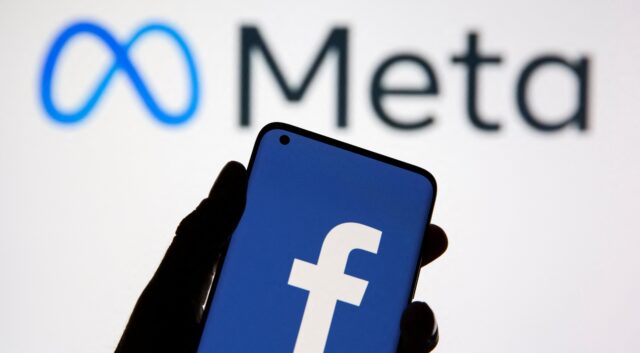Instagram hashtags are everywhere–but does your brand know how to use hashtags on Instagram to get the most value out of them?
Hashtags might not seem like much of a priority on the surface, but they remain one of the most important aspects of promoting your Instagram.
Once you start digging into using hashtags on Instagram, you’ll probably run into plenty of questions: Do you know which hashtags are leading followers to your page? What are the most popular tags in your industry? How many hashtags on Instagram do you tack on a typical post?
Without a keen understanding of Instagram hashtags and how they work, they can become #overkill pretty quickly.
Fortunately, we’re here to help. This guide breaks down everything you need to know about how to use hashtags for Instagram to grow your audience.
Instead of just tossing dozens of tags on a post and hoping for the best, you need a strategy for using hashtags on Instagram. Some types of brands have it easier on Instagram, while others have to get a little more creative.
Good question!
If you’re totally new to Instagram, you might not “get” what hashtags do exactly or see what the hype is all about.
There’s a reason why the majority of businesses include tags on their posts or create their own, though. Below are some key reasons why hashtags deserve your undivided attention.
In short, hashtags are what make your Instagram content discoverable.
Think about the time and energy that goes into any given Instagram post.
From snagging the perfect snapshot to crafting a clever caption, you don’t want all of that legwork to go to waste.
That’s where hashtags come in. Users can discover content by searching hashtags on their own or tapping through related posts for a particular tag. Here’s an example of how hashtags can send you down a rabbit hole of relevant content.
You can almost think of hashtags like you might think of keywords for a search engine, all confined to Instagram.
Neglecting Instagram hashtags means making your posts more difficult for potential followers to spot. On the flip side, taking a few seconds to tack on some tags instantly makes your posts discoverable.
Food for thought: according to recent Instagram statistics, posts including at least one hashtag score more engagement than those that feature none.
Followers engage with hashtags, plain and simple. That’s why so many brands promote their own branded hashtags to encourage interactions with their customers.
If you’re on the hunt for what’s hot in your industry, look no further than trending hashtags.
Whether it’s your target audience or fellow brands, hashtags can clue you in on what people are buzzing about.
Consistently following tags can help you keep a close eye on competitors as well as what people are saying about your own brand.
Now that we’ve highlighted why hashtags matter, it’s time to talk about coming up with a publishing strategy.
In other words, which hashtags make sense for your business’ posts?
There is no one-size-fits-all answer here, but here are some ideas to help serve as a starting point.
The best hashtags are the ones that speak your customers’ language.
Simply put, these are tags that are popular enough that they’ll actually get used but aren’t so popular that your posts will get lost in the shuffle.
For example, there are tons of beauty-related hashtags such as #unicornhair or #mermaidhair that speak to a more specific audience than just #beauty.
Similarly, a fitness brand with a predominantly female demographic might find more success with tags related to #femalefitness versus #fitness by itself.
As noted, creating your own hashtag should be a matter of “when,” not “if.”
Perfect for promoting your Instagram and encouraging user-generated content, branded hashtags are certainly important. They don’t necessarily have to be rocket science, though. Here are some ideas for common branded hashtag types and variations you can brainstorm yourself.
As noted, any sort of tag will instantly increase your likelihood of engagement.
That’s why general hashtags such as #love (noted to be the most popular tag as of 2019) are fair game, too. You can comb through this list of the most-liked hashtags for some additional ideas.
Oh, and don’t forget about holiday hashtags including niche social holidays. These types of tags are trendy and time-sensitive, perfect for showing off your personality and introducing yourself to new followers.
With a better idea of which hashtags you should use, let’s talk about how to put your hashtag strategy into action.
Here are some best practices of hashtags for Instagram to keep in the back of your mind.
Instagram allows you to include 30 hashtags on any given post.
That doesn’t mean you should every time, though. Too many hashtags can look spammy, similar to keyword stuffing in web content.
So what’s considered optimal? Based on research, top-performing posts appear to follow the rule of “less is more.” Typically we see brands include between two to five, give or take. This provides brands some wiggle room based on their captions and what terms they’re trying to target.
The takeaway here? Rather than obsess over the “right” number of hashtags, think “less is more” and be willing to experiment. With the help of tools like Sprout, you can find your brand’s sweet spot as well as your top-performing tags.
For the sake of targeting more tags without crowding your captions, it’s common for brands to include their hashtags in the first comment of their posts.
If you want people to use your branded hashtag, you’re going to have to ask.
In addition to your Instagram bio, make sure to promote your hashtag throughout your marketing campaigns. This includes on-site and via email.
When you’re targeting frequently used hashtags, you need the photo that goes with your Instagram caption to stand out.
As we mentioned earlier, the hashtags you use should be relevant to the photo you’re posting. This might seem like a no-brainer, but it’s worth repeating.
Remember: even though adding hashtags in your captions can make your posts easier to discover, the image is what will pull in users.
Do a search for your hashtag and pay attention to the photos that show up. Specifically, you want to look for similarities between the images. If you find a lot of the same, this could be an opportunity to branch out. This is why you have to invest in high-quality photos or videos for your page.
Don’t just rely on someone who thinks they take good grams–instead, find a photographer that not only knows how to work a camera but specializes in Instagram shoots, too.
Once you find popular hashtags that people engage with, it might be tempting to continue using those same hashtags in every post. However, eventually, you’ll need to add some more variation.
If you’ve been using the same hashtags for months, there’s a chance people already saw your content and ignored it. By adding in a little variation, you increase the chances to reach new people.
You might be tempted to just use the most popular hashtag related to your industry.
However, take the time to experiment with tags that are used less frequently. The benefit of this approach is hashtags that are used less frequently are less competitive.
When you target hashtags that have been used millions of times, you’re competing against millions of other photos and videos to get your content seen. On the flip side, when you use hashtags that have been used in 20K posts or so, you’re competing with a smaller group of people.
That’s why we recommend measuring the performance of your competitors’ campaigns or brand hashtags to stay in the know. When you learn how to analyze competitor data, you improve your strategy by identifying the content and campaigns that work best for them.





